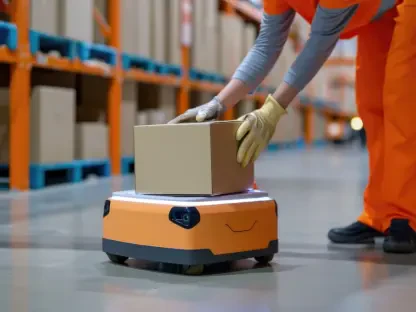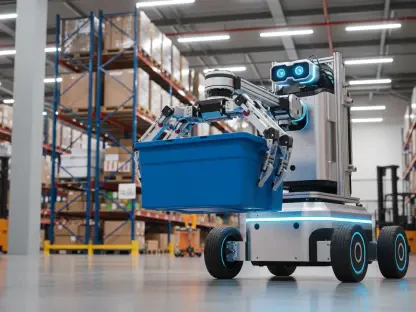The rapid pace of development in industrial and logistics operations has necessitated innovations in technology designed to increase efficiency and security. High-Speed Door Technology stands out as a transformative solution, addressing the urgent need for improved operational dynamics. With the support of industry associations and continuous technological upgrades, this sector has reached unprecedented heights. The impact is visible not just in enhanced productivity but also in a marked rise in safety standards. This review delves into the state-of-the-art advancements in high-speed door technology, illuminating the trajectory of its evolution, notable features, and implications across various sectors.
Evolution and Core Components
High-speed doors have emerged as pivotal components in the modern industrial landscape, characterized by rapid opening and closing capabilities designed to streamline operations. The core principle lies in enhancing workflow efficiencies while safeguarding premises against external environmental changes. Typically equipped with advanced sensors and emergency stop functions, these doors are tailored to adhere to stringent regulations ensuring both functionality and safety. The Door and Hardware Federation and top industry players contribute considerably to driving innovation, embedding this technology deeply into the fabric of industrial operations.
Speed and Operational Efficiency
The primary appeal of high-speed doors is rooted in their unmatched speed and efficiency. This technology has revolutionized how industrial entryways operate, significantly reducing time spent on repetitive tasks and thereby boosting overall productivity. The TurboLux range from Hörmann UK demonstrates cutting-edge capabilities, achieving unparalleled opening speeds of up to 4 meters per second. These advancements underscore the importance of maximizing throughput, reducing energy consumption, and enhancing workflow processes. Such doors are critical assets in optimized warehousing environments where time-saving translates directly to financial gain.
Innovations in Safety Features
Safety remains at the forefront of high-speed door design, with innovations tailored to minimize risks associated with high-velocity operations. The integration of advanced sensors and emergency stop functions not only meets but often exceeds the safety standards outlined by regulatory bodies. Technologies such as Stertil’s Flexiedge offer groundbreaking mechanisms like self-reinserting capabilities, adding an extra layer of protection by ensuring door alignment in case of accidental impact. These features exemplify the industry’s commitment to safety, making high-speed doors indispensable in environments where personnel safety is paramount.
Latest Technological Advancements
The field of high-speed door technology has witnessed a surge in innovation, with solutions continually adapting to emerging industrial needs. Recent developments showcase a trend toward doors that merge heightened safety with sophisticated technology, optimized for both speed and energy efficiency. The introduction of EFAFLEX’s SST-260 door exemplifies this shift, presenting enhanced insulation and security tailored for the demands of modern logistics and warehousing sectors. Progress in this area not only adjusts to consumer expectations but proactively shapes new standards across various applications.
Varied Applications Across Industries
Real-world implementations of high-speed doors span a diverse range of industries, with logistics, warehousing, and manufacturing leading the charge. In logistics hubs, these doors provide seamless vehicle access, supporting efficient loading and unloading processes. Warehousing facilities leverage this technology to maintain controlled environments, ensuring goods are stored under optimal conditions. In manufacturing plants, high-speed doors facilitate swift transitions between production zones, minimizing cross-contamination risks and preserving workflow integrity. The numerous applications highlight the versatility and critical importance of these systems in industrial settings.
Minimizing Challenges and Limitations
Despite the transformative influence of high-speed door technology, challenges persist. Technical hurdles such as complexity in installations, regulatory compliance, and market accessibility are constant factors shaping this landscape. The BID Group emphasizes the need for professional installation and maintenance, backed by guidelines from the Health and Safety Executive, to prolong the lifespan and effectiveness of these systems. Active efforts in research and development continue to focus on overcoming the inherent limitations, ensuring high-speed doors remain integral to future-ready industrial environments.
Future Trajectory and Potential
Looking forward, the trajectory for high-speed door technology presents an exciting prospect of continual advancement. Potential breakthroughs are poised to amplify current capabilities, offering significant leaps in efficiency and safety that align with futuristic smart factory concepts. Anticipations revolve around integrating AI-driven systems, predictive maintenance protocols, and further enhancing environmental protection features. This forward-looking vision embodies a shift characterized by holistic technological integration, redefining operational norms across industries and contributing to broader societal growth.
Verdict: A Transformative Force in Industrial Operations
High-speed door technology has emerged as a critical entry point into the future of industrial advancements, seamlessly bridging efficiency efforts with safety imperatives. From notable features to wide-ranging applications, the review sheds light on the indelible impact these systems have had on transforming various sectors. While challenges remain, the steady march toward innovative solutions promises an exciting horizon. As industries continue to evolve, the role of high-speed doors in fostering enhanced industrial practices stands undeniable, offering a glimpse into sustainable and efficient operational ecosystems.









